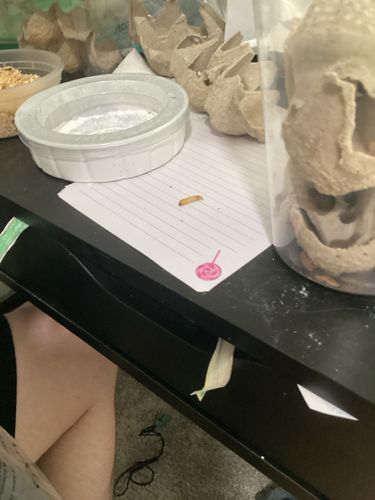Mealworm (larva)
Scientific Name: Tenebrio molitor
Order & Family: Coleoptera, Tenebrionidae
Size: Larvae typically 2-3 cm (0.8-1.2 inches) in length.

Natural Habitat
Found in dark, damp places, often associated with stored grains, flour, and other dried food products. Also commonly raised in captivity for pet food.
Diet & Feeding
Omnivorous scavengers. Primarily feed on decaying organic matter, stored grains, flour, bread, cereals, and occasionally small insects. In captivity, they are fed oats, cornmeal, vegetables, and fruits.
Behavior Patterns
Mealworms are the larvae of the darkling beetle. They are nocturnal and tend to burrow into their food source or substrate. They go through complete metamorphosis: egg, larva (mealworm), pupa, and adult beetle. The larval stage is the longest, lasting several months. They will pupate into an immobile, cream-colored pupa before emerging as a black beetle.
Risks & Benefits
Generally harmless to humans; they don't bite or sting. Can be considered a minor pantry pest if found in significant numbers in stored food, contaminating products with their waste and presence. However, they are widely recognized for their benefits: as a protein-rich food source for pets (reptiles, birds, fish), and increasingly for human consumption in some regions. They are also used in scientific research, and there is growing interest in their ability to biodegrade plastics like polystyrene.
Identified on: 9/7/2025